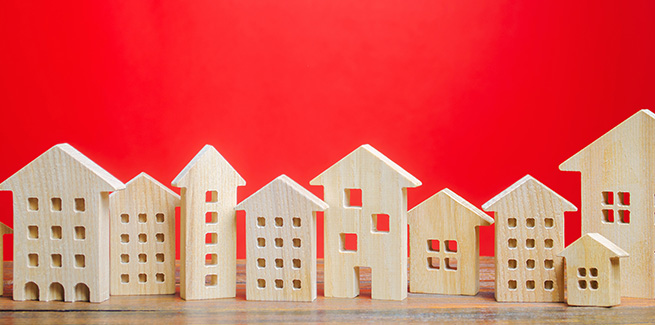The Australian Bureau of Statistics’ (ABS) Residential Property Price Indexes across eight capital cities in Australia have revealed that the total value of Australia’s 10.6 million residential dwellings rose by $449.9 billion to almost $8.3 trillion in the March 2021 quarter.
The March 2021 quarter growth marked the largest rise on record for this series, while this is the first time that the total value of residential dwellings has surpassed $8 trillion, ABS head of prices statistics Michelle Marquardt said.
Of the total value of residential dwellings, $7.9 trillion was owned by households, the ABS said.
The new records have come amid strong buyer demand for housing, lower supply, record-low interest rates, government incentives such as the HomeBuilder package and the First Home Loan Deposit Scheme, and rising property prices.
The release of ABS’ figures has followed the release of data from CoreLogic in May, which revealed that the total value of home dwellings has surpassed the $8-trillion mark for the first time to total $8.1 trillion.
However, in September 2020, ABS figures pointed to COVID-19-induced housing market weakness across the capital cities, sparking off a $98-billion slide in the total value of residential dwellings to $7.1 trillion.
Meanwhile, residential property prices registered its strongest quarterly growth since the December 2009 quarter, rising by 5.4 per cent in the March 2021 quarter.
The ABS data showed that all capital cities recorded a rise in residential property prices in the March 2021 quarter, led by Sydney (6.1 per cent) and Hobart (6.1 per cent), followed by Canberra (5.6 per cent), Perth (5.2 per cent), Melbourne (5.1 per cent), Darwin (4.7 per cent), Brisbane (4 per cent) and Adelaide (4 per cent).
The price of detached dwellings rose by 6.4 per cent in the March 2020 quarter, while attached dwelling prices rose by 2.7 per cent, according to the data.
In addition, annual residential property prices rose 7.5 per cent, with Canberra registering the highest annual rise (10.9 per cent), followed by Hobart (10.2 per cent) and Perth (9 per cent).
Annual property prices rose by 8 per cent in Sydney, 7.5 per cent in Brisbane and Adelaide, 6.4 per cent in Darwin and 5.9 per cent in Melbourne, the data showed.
The figures showed that NSW accounted for around 40 per cent or $3.3 trillion of total dwelling values, with the average price of residential dwellings rising to $1.01 million.
Ms Marquardt said that this was the first time that the average price of dwellings had surpassed the $1-million mark in any state or territory.
The second highest mean price was in Victoria ($834,600) followed by the ACT ($809,600), while the lowest mean price was in the Northern Territory ($480,400).
It also showed that the mean price of residential dwellings in Australia was $779,000, up from $739,000 in the December 2020 quarter, while the number of residential dwellings rose by 44,300 to over 10.6 million dwellings.
Commenting on the figures, Ms Marquardt said: “Results this quarter were consistent with housing market conditions.
“Strong demand for housing was supported by record-low interest rates, government initiatives and rising consumer confidence. Price rises were observed in all segments of the housing market with growth in house prices continuing to outpace price growth in attached dwellings.”
Meanwhile, CoreLogic’s Daily Home Value Index in its auctions summary for the week ended 13 June revealed that home values across the combined five capital cities rose by 10.9 per cent over the year to date, and 10.2 per cent over the last 12 months.
Home values recorded a monthly rise of 1.9 per cent and a weekly rise of 0.5 per cent, according to CoreLogic.
Supply, not policy change, the answer to heated housing market: Sukkar
The federal Assistant Treasurer and Minister for Housing Michael Sukkar has ruled out government intervention with policies to soften the housing bubble, stating that the issue lies with housing supply, which he said is the states and territories’ responsibility.
Responding to questions from the media about whether the federal government should intervene with policies to tackle rising house prices by, for example, reducing investment incentives, Mr Sukkar responded, “we won’t”.
Commenting further, Mr Sukkar said: “Unlike the Labor Party, we don’t think that the housing market needs to be taxed anymore. States and territories have the primary responsibility for supply.
“They control planning schemes and zoning, and we’re working through national cabinet through the population and migration subcommittee of national cabinet, working on ways that we can encourage states to get more supply into the market. There’s a lot of work to be done by our state and territory governments on ensuring that their supply of new housing can keep up with demand.”
Furthermore, Mr Sukkar has also ruled out making changes to negative gearing, stating that “we won’t have an each-way bet on housing taxes and negative gearing”.
“We have been very clear that the more than a million Australians who invest in their future by investing in a property should not be disadvantaged and should not be taxed more.”
Mr Sukkar was also asked if schemes such as the First Home Loan Deposit Scheme (FHLDS) and the HomeBuilder package is simply adding more liquidity into an already heated-up property market, and “fuelling” the housing bubble.
Mr Sukkar responded that the FHLDS, the Family Home Guarantee, and the New Home Guarantee do not add more liquidity in the market, but they are government guarantees that enable borrowers to access the finance required to purchase a home.
“It’s not a traditional grant that obviously puts more liquidity into the market,”_ he said.
“We chose that option for the HomeBuilder program in the middle of a pandemic because sales fell off a cliff and the residential construction industry were saying to the government that half a million jobs would be at risk.”
[Related: WA investor loans hit 5-year peak]
 ;
;
